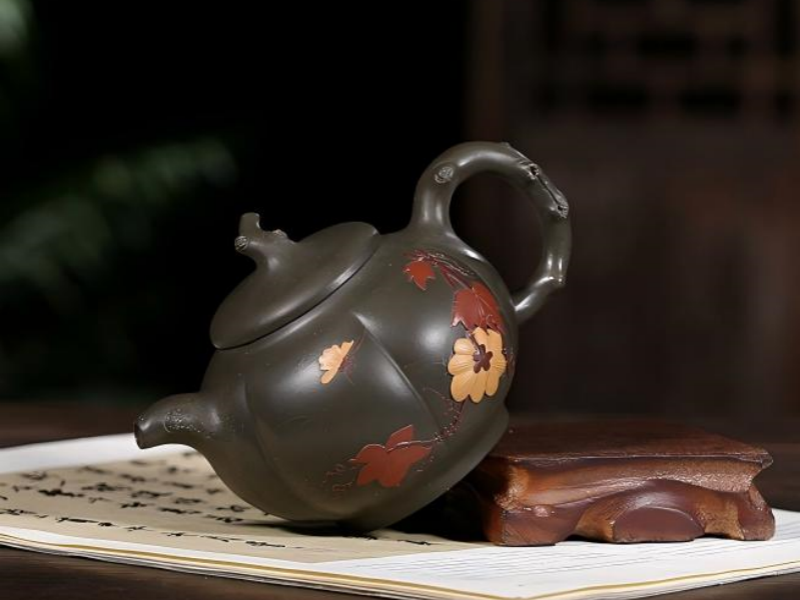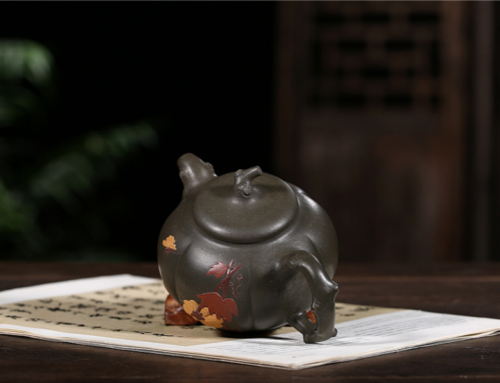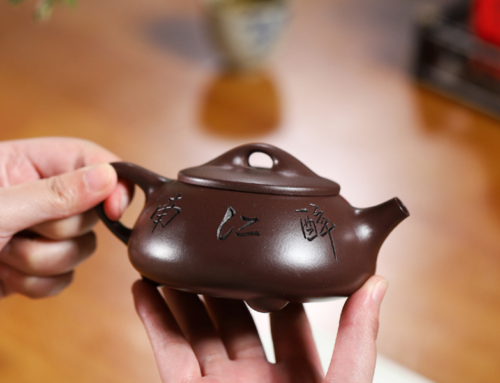The Role of Chinese Teapots in Tea Ceremonies and Cultural Rituals
Introduction: The Heart of Chinese Tea Ceremonies
Enter the world of Chinese tea, and you’ll find that the teapot is not just a container; it’s the centerpiece of a time-honored ritual. The role of Chinese teapots in tea ceremonies and cultural rituals is deeply significant, embodying the art of hospitality, beauty, and tradition. They serve as the focal point of numerous ceremonies and practices throughout China. The Chinese teapot has become an emblem of refinement and artistry, rich with history and meaning. In China, a tea ceremony is more than just an act of drinking tea. It is designed to forge connections. Interpersonal connections between family members, colleagues, and even strangers. Connections with one’s surroundings and the magnificence of nature. The connection between the heart and the body, and reconciling that connection with the purpose of creation. And at the center of this experience is the Chinese teapot, around which family, friends and strangers gather to engage in a tradition which embodies mindfulness and respect. A balance between the purposeful and the aesthetic, utilizing function as a vessel through which to embrace personal, spiritual, and relational meaning. It can be seen all throughout the land, in an array of environments. Be it a bustling tea house in the heart of the city, or a tranquil soiree in a rural village, the presence of a Chinese teapot is symbolic of a momentary departure from the condition of being. Did you know? The oldest known Chinese teapots date back to the Yuan dynasty (1271–1368), a time when tea drinking was becoming a refined art. These days, collectors and tea aficionados covet unusual or rare teapots, some of which fetch tens of thousands of dollars at auction. Case study: In the Longjing (Dragon Well) tea-producing region of Hangzhou, some families hand prized examples of Yixing clay teapots between generations. It is said that the teapots make better tasting tea with each use, as they carry memories of past tea ceremonies. Table: Symbolic Meanings of Chinese Teapots in Rituals Symbol | Meaning | Example Occasion Harmony | Unity among participants | Family tea gathering Respect | Honoring ancestors and guests | Ancestral worship Hospitality | Welcoming visitors | Social tea ceremony Mindfulness | Focus and reflection | Solo tea ritual In this article, you’ll uncover the secrets behind these remarkable teapots—their history, their place in traditional and modern ceremonies, and how to choose one for your own ritual. Whether you’re a tea lover or simply curious about Chinese culture, understanding the role of Chinese teapots in tea ceremonies and cultural rituals opens a window into a world of beauty, meaning, and connection.
What Makes a Chinese Teapot Special?
Chinese teapots are more than functional vessels; they are wonders of art, design, and meaning. The function of Chinese teapots in tea ceremonies and cultural rituals begins with their idiosyncratic designs. Whereas Western teapots tend to prioritize volume and convenience, Chinese teapots emphasize balance, control, and the concentration of tea’s flavor and aroma.
Characteristics of Chinese Teapots
Materiality: Yixing clay, porcelain, glass, and sometimes metal are the most common materials. Yixing clay teapots, in particular, are praised for their ability to absorb the flavor of the tea over time, thereby enriching the brew with each subsequent pot. Shape & Size: Round, pear-shaped, squared— Chinese teapots come in virtually every shape. Each shape is distinct not only aesthetically, but also in how it affects the flow of water and the tea flavor and aroma extraction process. Chinese teapots tend to be small in size (fitting a single cup) because they are used for concentrated, repeated infusions. Craftsmanship: Many Chinese teapots are hand-crafted, often by artisanal masters. Chinese teapots may or may not logically bear the signature or seal of its maker. Thus, they are as much collectible works of art as they are family heirlooms. Table 1: Chinese vs. Western Teapots Feature | Chinese Teapots | Western Teapots Material | Yixing clay, porcelain | Ceramic, metal, glass Size | Small (100-300 ml) | Large (500+ ml) Brewing Purpose | Multiple short infusions | Single large brew Craftsmanship | Often hand-made | Often mass-produced Lid Fit | Tight, precise | Often loose Cultural Significance | High | Moderate “A well-chosen teapot is the soul of a good cup of tea. It speaks to the senses, the memory, and the heart.” — Zhang Ming, Yixing potter Form follows function; as beautiful as they are, Chinese teapots are built to perform. The porous nature of Yixing clay, for example, permits a teapot to “remember” the teas it has steeped, enriching every subsequent brew. Porcelain, on the other hand, is perfect for more delicate green teas, conserving aroma and transparency. Indeed, it is not uncommon for seasoned tea drinkers to adorn themselves with several teapots, each reserved for a particular type of tea. Fun Fact! Some collectors in China have over 100 teapots, with each one used for a different holiday, occasion, or type of tea. In many homes, the teapot picked for a ceremony conveys both the mood and the type of tea to be served. Visual Diagram suggestion: “Anatomy of a Chinese Teapot” • Lid with steam hole • Spout with filter holes • Handle, body, and base Knowing what makes a Chinese teapot special is the foundational step towards understanding its role in tea ceremonies and cultural rituals. Chinese teapots are not merely everyday items; they are companions in the quest of flavor, connection, and tradition.
Types of Chinese Teapots Used in Tea Rituals
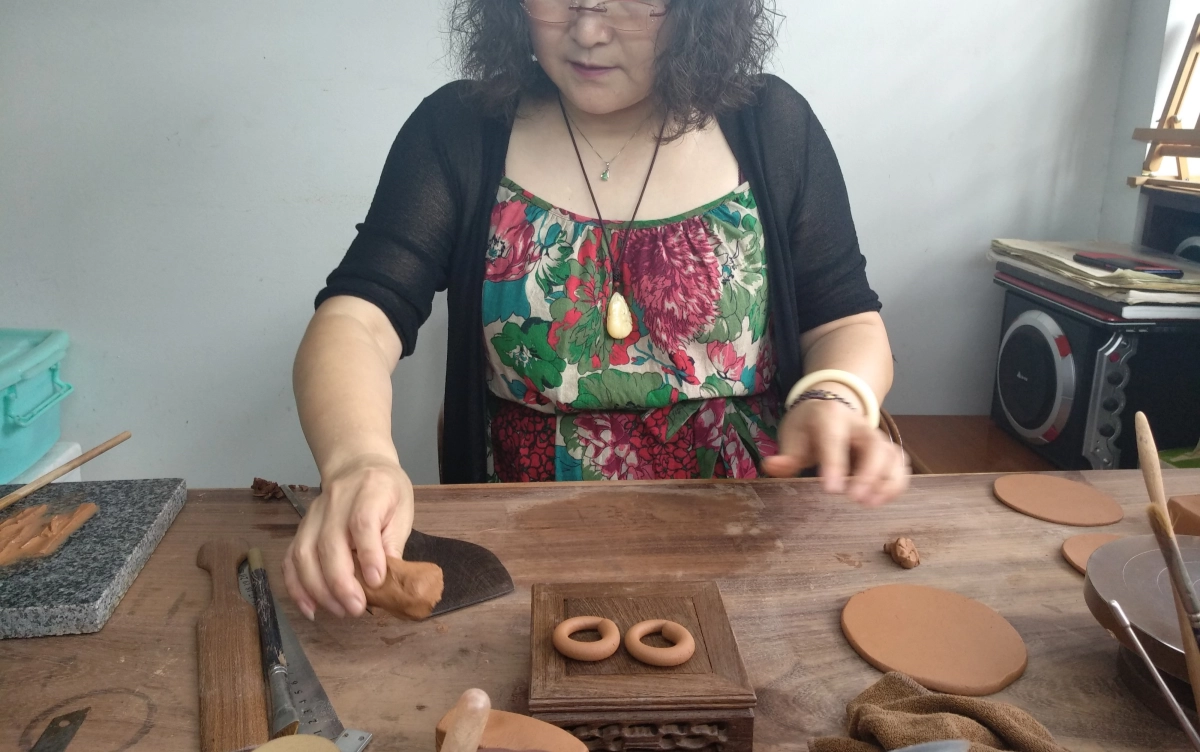
The range of Chinese teapots used in tea ceremonies and cultural rituals is mind-blowing. Each type adds its own personality to the table—literally—and defines the entire tea experience from fragrance to flavour, from aesthetic to the ceremonial process. Let’s check out two of the most renowned types: Yixing clay teapots and porcelain teapots, both steeped in Chinese history.
Yixing Clay Teapots
The Yixing teapot originates in Jiangsu province, and is composed of a unique purple clay known as “zisha.” The teapot’s significant features include a small-sized body, unglazed surface and porous texture, which allows flavors from tea to seep in and build up with each infusion. Tea connoisseurs often use them to brew oolong, pu-erh and black teas.
Some Yixing teapots have seen decades of use, handed down from one generation to the other, and the longer you use the teapot, the more intricate and smooth the taste of the tea thereafter.
Porcelain teapots
The first porcelain teapots were produced during the Tang dynasty. They became associated with sophistication and gentility. Pure white, blue or multicoloured, porcelain teapots are appropriate for green and scented teas whose flavours and aromas are preserved in the clarity of the porcelain. Character of porcelain teapots: Smooth Surface: There are no porous qualities to the nature of the structure so the flavours cannot linger on and affect the characteristics of future pots. This is why porcelain ware is perfect for brewing fine, delicate teas. Decoration: Paintings of natural scenes and beauty, calligraphy or historical stories. Variety: These range from small, elegant, individual teapots to larger, communal sets.

The Impact of Teapot Selection on the Flavor of Tea
The material, form and dimensions of a teapot aren’t simply aesthetic factors – they also impact the infusion process. Table: How Teapot Material Affects the Taste of Tea Teapot Type | Best Tea Type(s) | Flavor Profile | Typical Capacity Yixing Clay | Oolong, Pu-erh | Rich, complex, rounded | 100–250 ml Porcelain | Green, White, Scented | Crisp, clean, aromatic | 150–400 ml Glass | Flower, Light Oolong | Beautiful, unobtrusive | 200–400 ml “The teapot is the unsung hero of the Chinese tea ceremony. It brings out the best in the leaves and allows people to reconnect with tradition.” — Lin Hui, tea historian Choosing the best teapot is as much about taste as it is about respecting the spirit of the ceremony. The connection between Chinese teapots and tea ceremonies and cultural practices is a testament to the importance of each little detail, from the texture of the clay to the snugness of the lid. It’s also why tea masters spend many years perfecting the art of choosing a teapot and why every household reserves at least one special teapot for commemorating special occasions.
The Role of Chinese Teapots in Tea Ceremonies
At the centre of each traditional Chinese tea ceremony, you’ll find a teapot. Its role is everywhere from providing a literal vessel for the brewing of the leaves, to a symbolic item that shapes every step of the ritual. The role of Chinese teapots in tea ceremonies and cultural rituals is, basically, inextricable from the principles of respect, mindfulness, and community.
The Teapot’s Symbolic Meaning
For Chinese philosophy, harmony and balance is key. The Chinese teapot symbolises these values throughout its design, many a time being round and indicating the world as a whole. Meanwhile, the shape of the lid and the spout indicate the flow of one into the other. The symbolism of the teapot showcases itself in the act of pouring tea, which is generally considered a display of respect and care. The host offers the gift of tea and the warmth it entails, demonstrating an act of sharing with the attendees through the teapot. Symbolic meanings: • Unity: Circular body indicating togetherness. • Respect: Offering ancestors or guests a tea made with a teapot. • Mindfulness: The ritual, slow process of brewing tea through reflection. Case study: During the Mid-Autumn Festival, families crowd around a teapot and share mooncakes and myths together. That ritual wouldn’t be the same without the careful selection of a family Yixing pot, perhaps chosen on similar occasions over the decades.
Step-by-Step Tea Ceremony Focus
The traditional Chinese tea ceremony (Gongfu Cha) centres on a refined use of the teapot, with each step focusing on a precious element of either the ritual itself or the teapot. Chinese tea ceremony. Typical steps. Warming the Teapot: Boiling water is released into the teapot. This step cleanses and heats the material, awakening the natural character of the clay or the porcelain. Adding Tea Leaves: Carefully measured high-quality leaves are placed into the teapot in a gentle manner. First Pour: Water poured over the leaves is then disposed off immediately, washing and priming them for the infusion. Infusion: Hot water follows again, covering the tea leaves and allowing them to steep for the right amount of time. Pouring: Tea is poured into tiny cups so that everyone may enjoy the warmth of tea – often in a circular motion to ensure even taste amongst the guests. Gongfu Cha Steps and Their Purpose Step | Purpose Warm teapot | Cleanse, awaken material Add leaves | Prepare for infusion Rinse leaves | Remove impurities First infusion | Extract flavor, aroma Pour tea | Share, connect participants Throughout the tea ceremony, the teapot is treated with delicacy and respect. Allowing the weight, texture, and warmth of the teapot to reach the senses is a way of coming back to the moment and participating. Chinese teapot for tea ceremony. “The teapot is the heart of the tea ceremony. It teaches patience, gratitude, and the art of living slowly.” — Chen Li, tea ceremony master.
Teapots as Symbols of Hospitality and Mindfulness
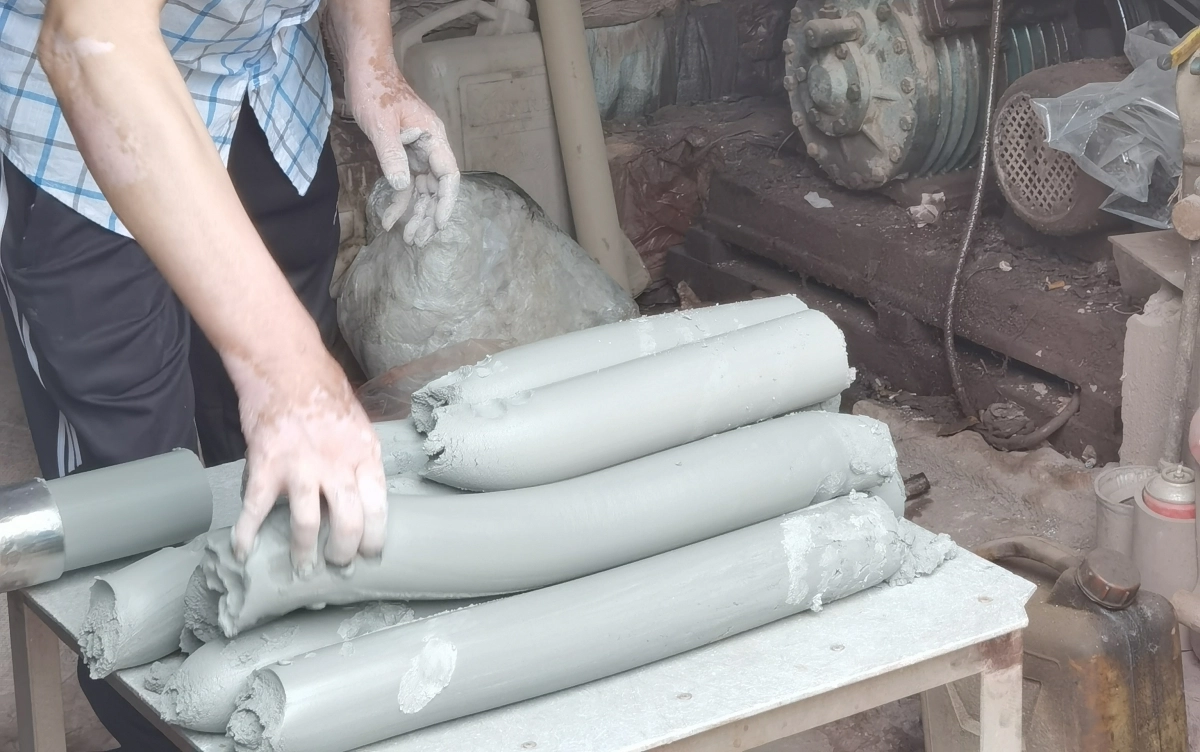
Offering tea with a unique or favorite teapot is one of the highest acts of hospitality in Chinese culture, representing the thoughtfulness and respect that lies behind the brew. The tea ritual intends to provide a unique experience in which to slow down, focus on the now, and leave space for appreciation of the present moment with the company of others. Useful tip: In the occasion of being invited to a Chinese tea ceremony, pay attention to the chosen teapot. Teapots are often a reflection of who the host is, and what kind of relationship they have with yourself. If you notice a particularly rare or antique teapot, you can tell your host holds you in high regard. Every element—glaze, shape, etc.—aids in composing the ceremony’s mood. Chinese teapots’ function in tea ceremonies and cultural practices is pragmatic and poetic. Turn unremarkable leaves and water into an experince [sic] remembered by all 5 senses.
Teapots in Chinese Cultural Rituals
Although tea ceremonies represent the most visible stage for Chinese teapots, their role is by no means confined to the tea table. They are woven into the fabric of everyday life and major cultural occasions alike, serving as icons of continuity, identity, and celebration. Testifying to their contributions to tea ceremonies and cultural rituals, Chinese teapots are given as gifts, collected as heirlooms, and featured as centerpieces in festivals.
Teapots in Festivals and Gifting
At Chinese New Year, a family may gift a teapot to another family or a younger relative to an elder. The gift of a teapot is a gift of harmony and prosperity, containing an invitation to sit down together and share in happiness and good fortune. In some parts of China, there are even local festivals centered on teapots, at which artisans display their breathtaking wares and local people compete with their best tea-brewing skills.
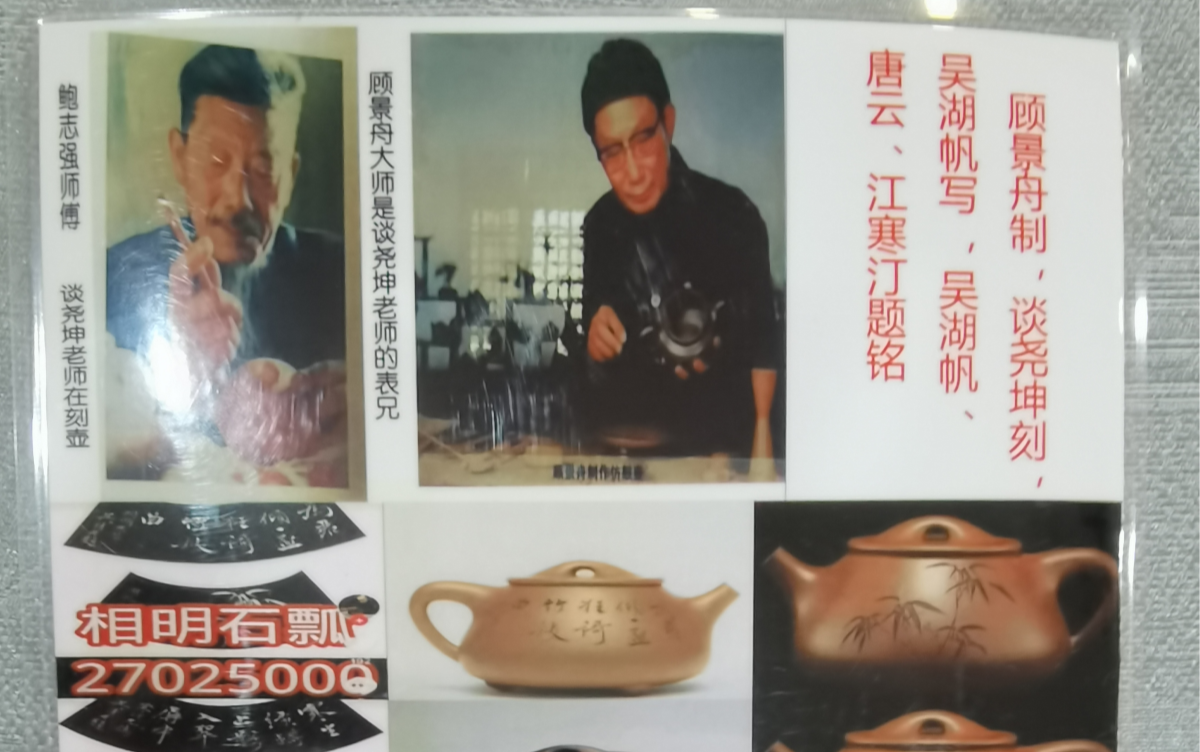
Teapots can also serve as diplomatic gifts. Chinese leaders have presented Yixing teapots to foreign leaders on multiple occasions, recognizing their potential to convey cultural sophistication. Data Point: According to the China National Tea Museum, over 60% of Chinese households own at least one teapot reserved specifically for special occasions.
Family Traditions and Heirlooms
In many families, the family’s finest teapot is traditionally set aside for ancestral worship or serving esteemed elders. It is not uncommon for the same pot to be put to the same use without interruption for fifty or sixty years, infusing stories and flavors of its own into every new ceremonial brew. A teapot passed from parent to child bears with it the wisdom and blessings of all who used it before or brought it to the altar. Fact: Some Yixing teapots are engraved with family mottos or dedications, making them literal records of heritage.
Local Traditions
The significance of Chinese teapots in ceremonies and cultural rituals can vary from region to region. In Southern China, where oolong and black teas are more prevalent, the use of small clay teapots and more frequent, informal gatherings are the norm. In the north, families may use larger porcelain pots for communal brewing, especially during cold winter months. Regional Preferences for Teapot Types Region | Preferred Teapot | Typical Tea | Occasion South | Yixing Clay | Oolong, Pu-erh | Family gatherings, festivals North | Porcelain | Green, Black | Ancestral worship, holidays
Teapots as Works of Art and Symbols of Status
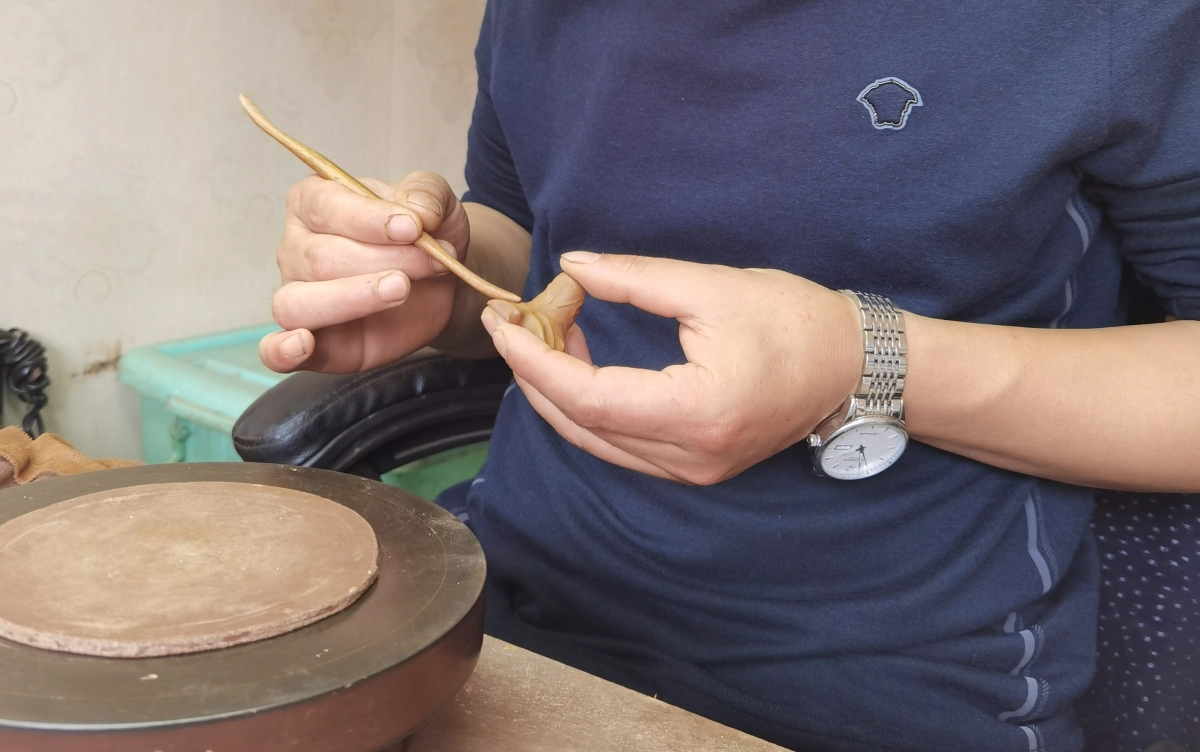
For many, teapots are not only utilitarian but deeply desired as objects of art. Famous teapot makers enjoy celebrity status, and rare pots are hunted by collectors hoping to score big at auction. Individual teapots sometimes fetch prices rivaling those of jewelry or paintings. Teapots are simultaneously status symbols and cultural heirlooms. “A teapot is not just for tea—it’s for memory, for artistry, and for celebration.” — Li Wei, curator, Shanghai Teapot Museum All over China teapots are deployed in christening life’s milestones, forming friendships, and shaping stories. In tea ceremonies and cultural rituals, teapots have proved their staying power: they are much more than common kitchenware; they are vessels of meaning, tradition, and joy.
How to Choose & Look After Your Chinese Teapot
Understanding how to choose the perfect Chinese teapot for your tea ceremonies and cultural rituals is not merely a case of matching the design to othertableware. It’s a practical way to narrow down what style of teapot you are looking for, as this will largely be defined by the type of tea, the type of material, the teapot size, and even the occasion that it will be used for. We’ve also included some helpful information to show you how to properly maintain your teapot, to ensure that it ages well and continues to play it’s important part in every ritual.
Choosing A Teapot Fit For The Tea
What To Look For: Material: • Yixing clay: oolong tea, pu-erh tea, black tea. Strengthens the flavour of tea with each brew. • Porcelain: green tea, white tea. Retains the aromatic nature of lighter teas / keeps flavour pure. • Glass: flower tea, visual enjoy… Oolong | Yixing Clay | Enhances and retains flavor Green | Porcelain | Preserves aroma, pure taste Flower | Glass | Visual appeal, neutral taste Pu-erh | Yixing Clay | Deepens flavor, absorbs essence
Basic Care and Cleaning Tips
Proper care ensures your teapot retains its charm and enhances your tea over time. Chinese teapots, especially Yixing clay, require gentle handling and regular maintenance. How to Clean a Yixing Clay Teapot: • Seasoning: Before first use, rinse with hot water and brew a mild tea to “season” the clay. • No Soap: Never use soap or detergent—just rinse with hot water and air dry. Soap can ruin the flavor memory built up in the clay. • Dedicated Use: Always use one clay teapot for one type of tea; mixing flavors can muddle the taste. How to Clean Porcelain and Glass Teapots: • Use mild, unscented soap if needed, but rinse thoroughly. • For stains, soak with hot water and a little baking soda. • Always dry completely to avoid odors or mold.
Quick Reference Chart: Teapot Care Routine Teapot Type | Cleaning Method | Special Considerations Yixing Clay | Hot water rinse only | Never use soap, season first Porcelain | Mild soap, rinse well | Avoid abrasives Glass | Soap or baking soda | Handle gently, check for cracks A well-maintained teapot doesn’t just brew better tea—it becomes a cherished companion in every ceremony. The role of Chinese teapots in tea ceremonies and cultural rituals depends on the care and respect shown to these vessels. With the right practices, your teapot will reward you with unforgettable flavors and enduring memories.
Modern Adaptations and Trends
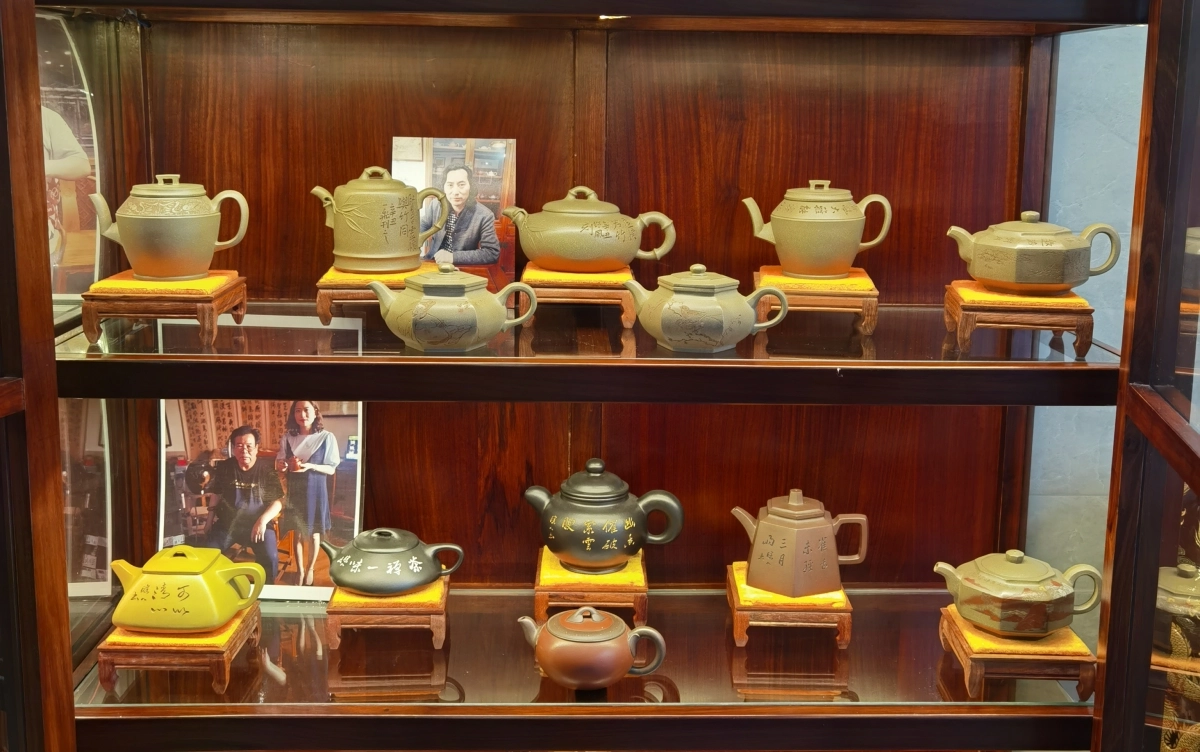
With China’s ongoing journey of transformation, tea rituals have naturally woven themselves into the changing fabric of way of life, habits and perferences. Chinese teapots play a crucial role in tea ceremonies and cultural rituals in profound ways, and continue to do so. Urbanisation, shifts in population and technological advancements are just some of the forces impacting teapot practices, so that they remain timeless as well as contemporary.
Contemporary Uses in Daily Life
For many younger Chinese, tea ceremonies are no longer formal affairs, but relaxed, everyday rituals. Small teapots sit on office desks, in the kitchens of studio apartments, and inside the backpacks of hiking enthusiasts. Some people choose to use glass teapots with inbuilt infusers for convenience, while others prefer minimalist clay pots which retain an antique air whilst offering a lifestyle-friendly, contemporary aesthetic. Fact: A 2023 survey carried out by the China Tea Association found that over 40% of young people in urban areas make loose leaf tea at least once per week. Many of them use small Yixing or glass teapots for solo-brewing.
Fusion of Tradition and Modernity
The line between past and present isn’t rigid. Contemporary tea drinkers combine traditional practice with a contemporary sensibility: Online tea workshops: Using digital livestreams, experts teach, share and explore Gongfu Cha techniques with students across China and beyond. Alongside instruction in traditional practice, livestreams cover tips on choosing teapots and other new ideas about tea brewing. Designer collaborations: Contemporary designers and artists partner with traditional artisans to create limited edition teapots. The designs combine centuries-old forms with contemporary style, like bold patterns or unexpected glaze choices. Smart teapots: Some brands are using digital technology to update traditional designs. Teapots might now include a digital thermometer or timer, taking some of the guesswork out of making great tea.
Cultural Continuity
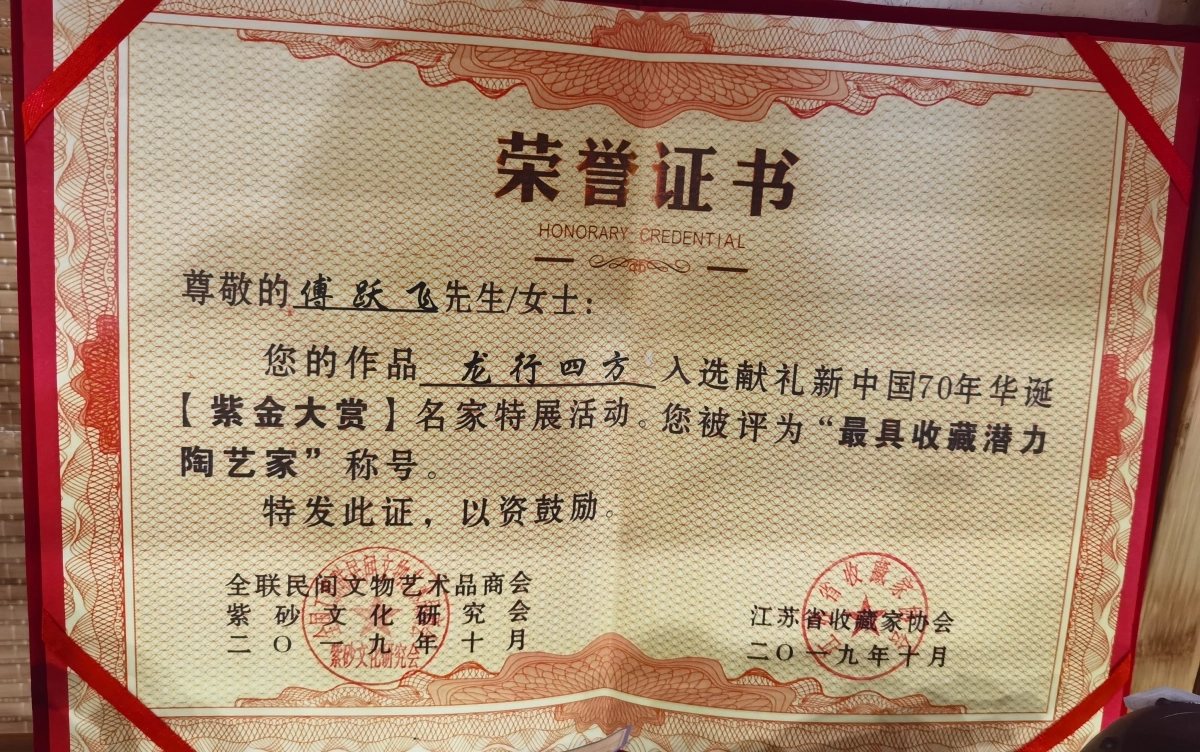
Yet the heart of the values stay the same. Chinese teapots, whether in a traditional tea ceremony or a modern cultural practice, continue to be centred around connection, mindfulness and celebration. From a multi-generational Gongfu Cha ceremony that’s been practised for centuries, to just getting together with officemates over a quick tea break, the teapot will be there to anchor the tradition and connect the generations and communities. Quote box: “Modern life rushes forward, but the teapot reminds us to slow down—to cherish each cup and each moment.” — Xu Yan (tea blogger) Thanks to these modern innovations, the teapot’s legacy has lasted to this very day, and it’s still serving up more than tea. It also serves up a strong sense of tradition, artistry and belonging.
Frequently Asked Questions
Delving into the significance of Chinese teapots within tea ceremonies and cultural rites can sometimes give rise to practical inquiries. Here, we address some of the most frequently posed questions to shed light on any uncertainties newcomers or even veteran tea lovers may have.
What makes Chinese teapots such an essential part of tea ceremonies?
Chinese teapots are important because they represent the spirit and craft of the tea ceremony. Their material, form, and execution affect the tea’s flavour and experience. Beyond a vessel for brewing, the teapot represents welcoming, tradition, and thoughtfulness—bringing people together to each other and to the past. The ritual of choosing, using, and maintaining a teapot turns drinking tea into an expression of culture.
Conclusion: The Lasting Legacy of Chinese Teapots
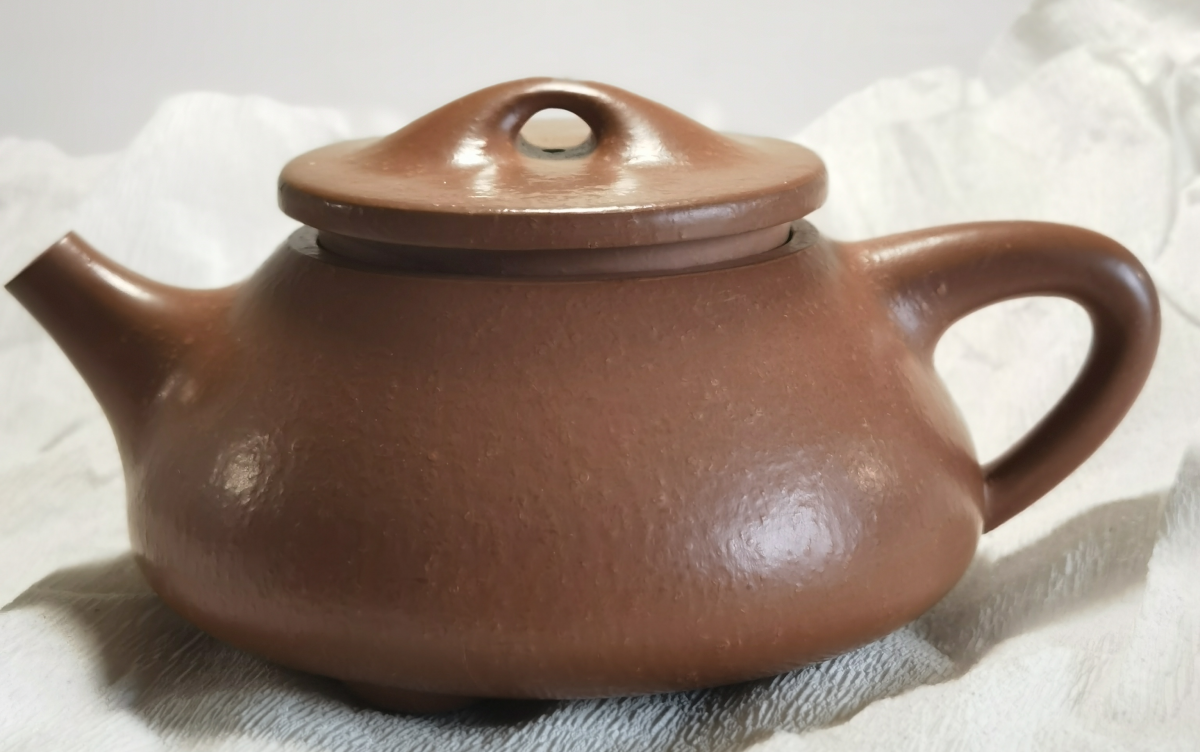
It doesn’t take long to realize that teapots are more than just vessels: they are the heart of the ceremony and the protectors of cultural memory. The role of Chinese teapots in tea ceremonies and cultural rituals carry as much significance in today’s world as ever, bridging generations and connecting people to their heritage, and to each other. Through their unique materials, meticulous craftsmanship, and considered use, Chinese teapots have the power to turn every tea-drinking occasion into a ritual. Whether one is brewing oolong from a well-used Yixing pot or hosting others for green tea in a porcelain pot, the mere presence of the teapot enhances the experience, encouraging us to slow down, enjoy the product of numerous skilled hands, and cherish the time we have, and the people we share it with. From the family heirlooms to the latest designer collaborations, Chinese teapots continue to adapt and evolve without losing sight of their role in tea ceremonies and cultural rituals. Their lasting legacy is proof that beauty and meaning can be found in everyday life, and that the act of sharing tea is an eternal celebration of life, connection, and tradition. Quick Recap Table: Why Chinese Teapots Endure Feature | Cultural Impact | Modern Relevance Craftsmanship | Symbol of artistry | Collectible, designer items Ritual Use | Marks milestones, unity | Daily mindfulness Heirloom Value | Connects generations | Family traditions endure Adaptability | Suits all occasions | Fits modern lifestyles Final Thought: “A Chinese teapot is a vessel of time—brewing not only tea, but stories, relationships, and wisdom.” By embracing the role of Chinese teapots in tea ceremonies and cultural rituals, you join a tradition that celebrates the art of living slowly and savoring every cup. Whether you’re a beginner or a seasoned tea lover, there is always more to discover in the world of Chinese teapots—and your next ceremony is a perfect place to start.




